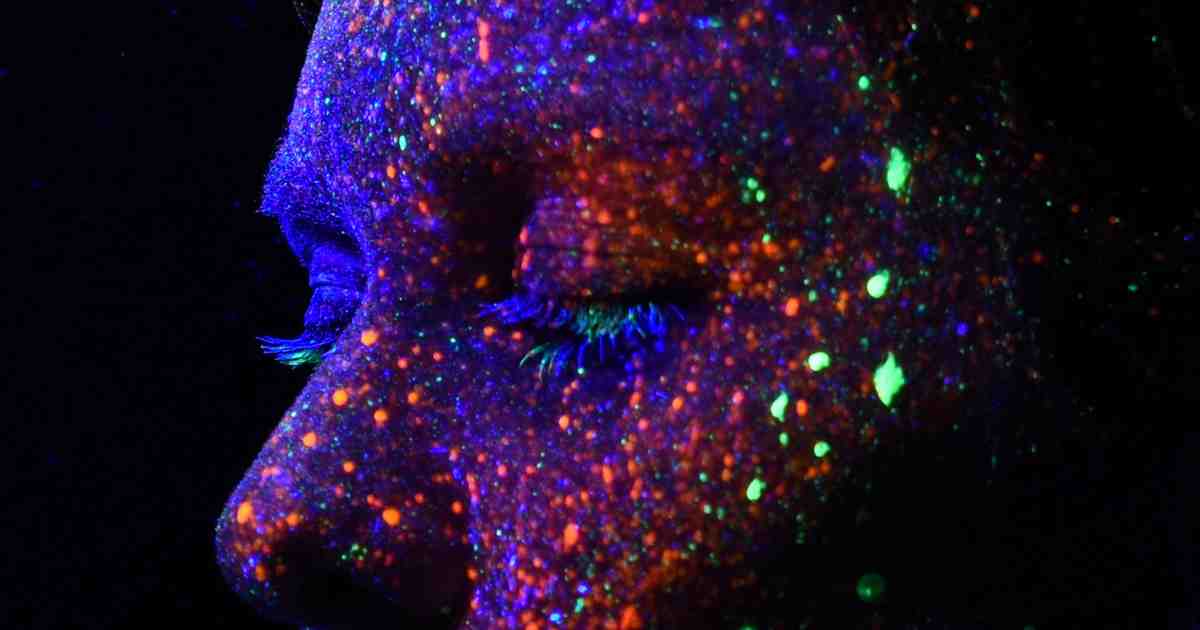Summary
-
Our attention is way more limited than we think.
-
We manage emotions completely the wrong way.
-
Social issues are much more important than we realise.
-
Attention changes the brain.
-
To enquire about personal, private help with maximizing your cognition, see if we’re a match.
Top photo by Rob Bates
Video: Learning about the brain changes everything
(15 mins) 2009 David Rock at TEDxTokyo
SURPRISE 1 - OUR ATTENTION IS VERY LIMITED
- We do a very small amount of quality thinking per day and we need to treat that as an asset.
SURPRISE 2 - WE GET REALLY WRONG HOW EMOTIONS WORK
-
Speaking about emotional arousals in simple terms reduces them significantly.
-
If you try to suppress an emotion, 1) your limbic system stays at the same level of arousal or gets worse, and that takes away resources from your cognitive functions which makes you less smart and kills your memory, and 2) other people’s blood pressure goes up because it creates a threat response in them.
-
Most of the emotional situations we deal with everyday are internal threats from fears, anxieties and concerns, and the more you know about your brain, the more you can say to yourself “Oh, that’s just my brain doing something crazy”.
-
The healthiest people are able to observe and laugh at themselves (humour is a cheap form of reappraisal).
SURPRISE 3 - WE’VE COMPLETELY MISUNDERSTOOD HOW IMPORTANT THE SOCIAL WORLD IS TO THE BRAIN
-
Huge amounts of the brain are dedicated to social interactions because we don’t survive without the social world for the first 10 to 12 years of our lives.
-
A wolf has an incredible sense of smell. We have an incredible sense of exactly what’s going on in the social world.
-
From the brain’s perspective, the social world is as important as the physical world. eg. If you sense there’s a threat to your life, you’ll react very intensely, but also if you sense a threat to your status, which is your perception in terms of other people, you’ll also react as if your life is threatened.
-
The brain network for feeling physical pain is used for feeling social pain, so if you’re feeling ostracized and people are attacking you, take a Tylenol!
-
The brain wants to move towards reward (dopamine release) and to stay away from threat (cortisol release). It wants to feel that:
- We’re always getting better (Status)
- We understand what’s going to happen (Certainty)
- We can decide for ourselves (Autonomy)
- We’re connected safely to others (Relatedness)
- Things are fair (Fairness)
SURPRISE 4 - ATTENTION CREATES CHANGE IN THE BRAIN
-
When you focus your attention on any particular aspect of experience, you embed or create circuits.
-
Teaching people about their brain has a profound effect on their ability to understand themselves and others, and makes them far more effective at whatever they want to achieve.
-
The network in the brain involved in high-level strategic thinking, planning and decision making is very different to the network for understanding yourself and others. The degree to which one is active, the other is inactive.
-
The ability to notice subtle signals facilitates great ideas.
-
When you understand your brain more, you have more choices and you’re able to catch more things before they unfold.
-
It creates a tide of mindfulness, you become an observer of your behavior, you become someone who can observe and stand aside, which makes you more reflective, more empathic and more caring.
We would have freedom of the will in proportion to our knowledge of the brain, just we had passed from a position of slave to a lord of nature.
We will hope and patiently await the time when a precise and complete knowledge of our highest organ, the brain, will become our profound achievement and the main foundation of a durable human happiness.
Ivan Pavlov
Book: Your Brain at Work
The reason for writing it down on paper or on a computer where you can see it is because the brain, unlikely as it may sound, is no place for serious thinking.
Jed McKenna (Spiritual Enlightenment, the Damnedest Thing)
David Rock - SCARF model of social threats
(3 mins) 2009
The SCARF model ties together the key social domains that are either rewarding for us or threatening to us, and is driving our behaviour, mostly subconsciously, all the time.
Social and emotional threats light up the SAME pain areas in your brain as physical threats!
Ordinary, everyday threats like being ignored, dismissed, silenced, humiliated, embarrassed, disrespected, degraded, devalued, betrayed, ridiculed, insulted, accused, judged, treated unjustly, dominated, controlled, manipulated, shamed, demeaned, dumped, abandoned, rejected, cast out, isolated, ostracised or excluded, are JUST as perceptually painful and threatening as “big T” trauma (eg. being assaulted, beaten, raped, drugged, tortured, imprisoned).
(Tip: This means you can reduce emotional pain by taking headache tablets!)
David Rock’s S.C.A.R.F. model is about threats to our:
- Status - “Compared to everyone else, where do I fit?”
- Certainty - “What’s going to happen to me?”
- Autonomy - “Can I decide for myself?”
- Relatedness - “Can I trust you?”
- Fairness - “Am I being treated justly?”
You will react VERY INTENSELY when your amygdala/limbic system/fight-flight-threat-defence-response motivates you to:
- protect yourself from looking bad
- protect yourself from situations where you can’t predict what’s going to happen
- protect yourself from losing choices and options and freedoms
- protect yourself from people you distrust
- protect yourself from being treated unfairly and unjustly
- protect yourself from situations where these things happen to people you care about
I know I’m fortunate to live an extraordinary life, and that most people would assume my business success, and the wealth that comes with it, have brought me happiness. But they haven’t; in fact it’s the reverse. I am successful, wealthy and connected because I am happy.
Richard Branson (Dear Stranger, Letters on the subject of happiness)
Video: Your Brain at Work
(55 mins) (Google Tech Talk 2009)
To optimize internal data processing:
- Understand your brain better
- Minimize threat response
- Maximize capacity in prefrontal cortex
- Maximize conditions for insight
SURPRISE 1 - RATIONAL THOUGHT IS (MASSIVELY) OVERRATED
-
Directed rational thought and conscious concentrated problem-solving has a capacity that is limited to a few hours of really deep processing out of every 24 because using the prefrontal cortex (PFC) uses metabolic resources and we evolved when metabolic resources were really limited (war and famine, life expectancy didn’t exceed 20) so we’re evolutionarily rewarded for minimizing mental resources.
Owen Parachute: Our daily "deep processing budget" is about 3 hours, which is less than 20% of our daily waking hours! -
Every time you do a bit of directed thinking (eg. consciously make a decision or intentionally solve a problem), you use up some of a limited bucket of resource and your performance on the next task goes down.
-
“If I respected this attention as a very limited resource, what would I do differently?”
-
We will avoid using the PFC, which means we will tend to do things we know how to do well, rather than doing something new or doing something differently. Anything that we do a few times, we embed the pattern so we don’t have to think about it.
-
Trying to change others by making them think will generate a subtle threat response in them!
Owen Parachute: "Don't make me think!" -
The capacity of our PFC is very, very tiny compared to the rest of our brain. We do not use it to solve most of our problems and it gets in the way when we try to solve our most complex problems.
-
We solve most problems using the rest of our brain using unconscious processing, not our PFC/rational thought.
Owen Parachute: So this must be the neurological basis of hypnosis - put the PFC to sleep, or overload it, and tell stories to the rest of the brain. -
Insight is when answers come to you unconsciously, without effort.
-
Insights come from noticing subtle, weak associations and the PFC prevents you from doing this because:
-
To notice information, you need to be able to notice dopamine spikes.
-
Dopamine comes from arousal which comes from electrical activity when many neurons complete circuits.
-
When you’re trying to consciously solve a really complex problem, you will be recruiting millions of neurons which will be generating lots of electrical activity this makes your brain very noisy like at a loud party.
-
An unconscious solution will have many less neurons be involved, which means much less electrical activity, which means much less arousal, much less dopamine and much less noticeable.
-
-
Insights come from noticing these weak signals. A loud brain means you’re not able to see them. At a very loud party, you don’t hear your phone ring.
Owen Parachute: Not having insight is like when you're at a VERY LOUD ROCK CONCERT AND YOU'RE JAMMED UP AGAINST LOTS OF OTHER PEOPLE AND YOU'RE DANCING AND SINGING ALONG AND THEN YOUR MOBILE PHONE BUZZES SOFTLY IN YOUR POCKET and you don't notice it. -
To get insight, your brain has to go into idle. You have to stop thinking, to stop any form of conscious, deliberate mental process.
Owen Parachute: Insights come from being able to hear the Insight Phone ring - "Go ahead, Caller!" -
You can increase the total number of problems you solve by insight by quietening down your overall mental activity, by shifting from anxiety or unhappiness to happiness (because the less anxious and unhappy you are and the more happy you are generally, the more open your field of view, both internally and externally) and by goofing off and just having some fun because this temporarily puts the brain in idle.
Owen Parachute: We usually say "I want to fix my problems so I can be happy," but it's the other way around, "I will work on being happier so I can fix my problems." -
The PFC is the only region of our brain that has a braking system for regulating automatic responses. Without it we’re an automaton, doing whatever our fears and motivations will have us do, which is often not in our best interests or anyone else’s.
-
The PFC is a mental sketch pad, a stage that allows us to create and imagine and understand new ideas by combining information coming in right now with existing information in the brain.
-
Flow is doing something you know how to do really well, in a slightly different way that stretches you. It feels good because it creates a rewarding positive feedback loop of dopamine.
SURPRISE 2 - WE GET EMOTIONS BACKWARD
-
Our capacity to regulate emotions is essential to success in life and we do the exact opposite of what we need.
-
The organizing principle of the brain is minimize danger, maximize reward.
-
Your limbic system is extremely skittish, constantly on the lookout for potential threats (and potential rewards).
-
Your limbic system is making a decision every moment about everything that you witness. It decides either “That’s good, I’m going to go towards that” or “That’s a kind of threat, I’m going to stay away from that”. This applies to every book cover you see, every photo, every person you bump into, every chair, every phoneme, every sound (even nonsense words that have absolutely no meaning are classified either as potentially threatening or potentially rewarding).
Owen Parachute: A mind forever classifying. -
Threat and reward have very different neurological impacts.
-
We’re much more likely to go into a threat state than a reward state, and when we do, we go deeper and stay there much longer and it’s much harder to displace, compared to a reward state.
-
Our brains evolved at a time when the people who survived were hypersensitive to threat, so our limbic system has a very important function of keeping us alive, so we are dramatically more likely to go the threat state.
-
Threatening things get lots of attention - when big, bad things happen in the world, the media loves it because they know it will get lots of attention.
-
The more activated your limbic system, the less activated and functional your PFC is. This happens at even very low levels of limbic arousal - an amount of threat you don’t even sense is there, like seeing someone who you don’t like much, has a measurable impact on your ability to solve problems and make decisions.
-
Even a little bit of threat creates a lot of noise in your brain (and your brain needs quiet to solve problems by insight).
-
When you experience a threat, your world changes fast - your limbic system gets aroused and your PFC gets de-aroused. When a strong threat kicks in, you have three choices: express, suppress, cognitive change.
-
Express is what a 6-year-old does - lets the emotion out kicking and screaming. If you do this, the emotion may pass from you but it stays in the people around you, which is maladaptive in the workplace.
-
Suppress is when you push it down, and try not to let other people see that you’re feeling it. This is what most people do and it’s the worst thing to do because it increases cognitive load, problem-solving ability goes down, your memory goes out the door, your limbic system arousal stays the same or gets worse and other people won’t like you because you make them uncomfortable (their blood pressure goes up) even when they don’t know what’s going on.
-
Cognitive change dampens your threat response automatically. It activates the PFC more, limbic arousal decreases, there’s no change to memory and there’s no effect on others. You have just a couple of seconds to use this strategy because it requires your PFC braking system and when an emotion kicks in, limbic arousal goes up very fast and PFC braking ability diminishes very fast. This means you need to be aware of internal states within a couple of seconds and the less aware you are of what you’re feeling anytime, what your internal states are, the more difficult it will be for you to use cognitive change strategies.
Owen Parachute: To stay out of the hole, react within 2 seconds. -
Cognitive change labelling is brief, spoken labelling where you define an emotional state in a word or two, out loud, without going into the story of it. Saying it out loud activates a stronger braking network compared to just thinking it, because speaking has more attention density than thinking.
Owen Parachute: Example of cognitive labelling: "Oh, I'm frazzled." -
Cognitive change reappraisal (reframing, recontextualizing) is where you change your entire interpretation of an event, where you invent a different story. Strong threats require reappraisal. Reappraisal is difficult to do on your own. The cheapest form of reappraisal is humour. When things are tough, laughing will shift you from a threat state to a towards state and you will see more options.
Owen Parachute: Example of cognitive reappraisal: "Oh, this thing just happened. What's good about it is ..." The etymology of "reappraise" is "put a different price on it, put a different value on it." -
Some people want to “see things as they really are”. People who suppress more, compared to reappraising, score significantly below average on optimism, environmental mastery, positive relationships and life satisfaction.
-
The more you understand about your brain, the more you can reappraise internal strong threats. You can recognize internal experiences and reappraise them as brain functioning (“Oh wait, that’s just my brain!”), as things you can change.
-
The more your limbic system is activated, the less your PFC can be activated, so your decision-making ability will go down. This also happens with strong reward positives, it’s just that they’re much rarer than strong threat negatives. Being too happy inhibits your processing, and you miss things that you wouldn’t normally miss.
-
Focusing your attention on a future, intangible, uncertain goal requires a lot of PFC space, which means you need to be feeling safe, because threat response reduces that space.
-
For maximizing and optimizing internal processing, you want to be just slightly positive - slightly more rewarded than neutral.
SURPRISE 3 - SOCIAL NEEDS ARE PRIMARY NEEDS
-
Threat responses cause pain to cause us to focus on the threat to our life. Faced with the threat of physical violence, you’ll stop everything and freak out.
-
Your brain keeps track of environmental domains like water and temperature using threat and reward circuitry.
-
Your brain keeps track of social domains using the same circuitry.
-
These social threats and rewards are much more overwhelming than people realize.
-
Social threats activate the same pain regions of the brain as physical ones.
-
Tip: Aspirin diminishes physical pain and it also diminishes emotional pain.
-
We avoid social threats like we avoid physical pain.
-
Social rewards activate the dopamine reward center more than money.
Owen Parachute: Social media sites are successful to the extent they are forums for amplifying social threats and social rewards. -
Wolves get resources from the wild so they’ve got great wiring for smell so they can smell something dead a thousand feet away.
-
From the moment we’re born, we get resources from other people so our brain is deeply social. You’ve got massive amount of social circuitry for reading other people’s intentions, goals and emotions.
-
Paper: “Managing With The Brain In Mind” - Summary of major social threats and rewards driving our behaviour (SCARF), the brain’s own goals with respect to the social world.
-
Status and certainty threats are the biggest.
Owen Parachute: Example of a huge Status Threat and Certainty Threat combined: "I hate to scare you, but you should hear what they're saying about you." -
Status is about better-than-worse-than, agreed pecking order. When we feel like we’ve gone up in status (or expect to), we get a wonderful reward and when we feel like it’s gone down (or expect to), we get a very intense threat like death (because “bad” is always stronger than “good”).
-
Status threats at work:
- “We need to talk about the project.”
- “I need to give you some feedback.”
- “Let me tell you what other people have been saying about you.” (eg. The Performance Review)
- “You’ll be getting some coaching now.”
- “You haven’t been invited to the meeting because it’s only for important people.”
-
We avoid situations where our status might go down. eg. When you try to change anyone in any way (your kids, your partner, your colleagues), you’ll get tremendous pushback because it’s a status threat and a certainty threat: “I’ve got to start with the premise that there’s something wrong with you, and I’ve got more information, or I know something you don’t.”
Owen Parachute: Example of a Status Threat: "I'm better than you. You're not as good as me. You're worth less than me." If someone has said they are better than us, or made us look bad in the eyes of others, or has put us down, or has ridiculed us, then our position in the pecking order has gone down. The threat then is that we emotionally believe we're going to get less resources and rewards (physical and social) because everything we want in life is controlled by other people. We can't just find an empty cave somewhere and camp there for a while and go out and hunt a mammoth alone. We need to earn money and rewards so we can pay and trade for somewhere safe to live and so we can go to the shops to buy fish dinner. -
Certainty: When you feel more certain about something, you feel pretty good. Uncertainty activates a threat response - even a little ambiguity lights up the limbic system in a big way.
Owen Parachute: Example of a Certainty Threat: "There are big changes coming around here but I'm not going to tell you what they are or when you're going to find out." Our typical reaction is: "Uh-oh, what's going to happen to me? How well can I predict my future now? I was relying on something and now I have to change my plans." -
Autonomy: When you detect you have choices, a big stressor becomes small. When you think you just have to do what someone else wants, a small stressor becomes really big.
Owen Parachute: Example of an Autonomy Threat: "I'm going to take decision-making power away from you." Someone or some event has taken some choices away from me. If you're put in a position of no choice, you'll be very threatened. -
Relatedness: Friend or foe? Are you in my tribe or another tribe? Are you in my in-group or my out-group? Can I trust you?
-
Relatedness: Everyone starts as a foe until proven otherwise. You make very different decisions when someone’s in your in-group compared to your out-group. You don’t feel the pain of someone in your out-group, you don’t feel empathy. When someone in your out-group speaks to you, you don’t really listen to what they say, you don’t create maps of what they’re saying. When someone’s in your in-group, you experience their pain, you see what they’re seeing and saying. Collaboration goes poorly with even slight foes.
Owen Parachute: Example of a Relatedness Threat: Someone I trusted has betrayed me. Something has happened which has caused me to increase my distrust of people in general. -
Fairness: fair = reward, unfair = threat.
Owen Parachute: Example of a Fairness Threat: "It's not fair that guy was promoted ahead of me", "He's taking advantage of me", "She's not giving me fair exchange", "My connection with him has become unfair." -
Engagement is a brain state that’s making new connections, has lots of dopamine, is experiencing flow and is experiencing these social rewards.
-
When you’re experiencing lots of rewards, your world is bigger, you perceive more information because you’ve got more prefrontal function and more insight capacity. So minimizing threat in these social ways is really important.
-
Paper: “Managing with the Brain in Mind”
SURPRISE 4 - ATTENTION CHANGES THE BRAIN, IN SECONDS
-
The more you understand the brain, the more you become able to control your attention and make attentional choices.
-
Develop the capacity to control your attention, to notice internal states. You’ll become much better at cognitive control when you’re able to distinguish between taking in data (direct experience) and story narrative about data. Even a few minutes a day of just noticing what your brain’s doing has measurable benefits on mental function.
-
Article: “The Neuroscience of Mindfulness”
-
Buddhist monks have practised staying in a “towards” state.
One need not be a Chamber-to be Haunted-
One need not be a House-
The Brain has Corridors-surpassing
Material Place-Emily Dickinson





